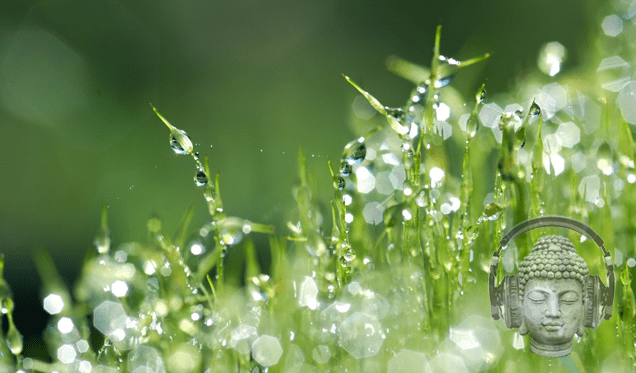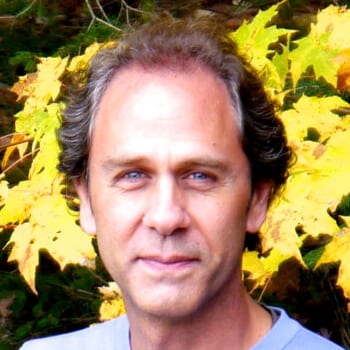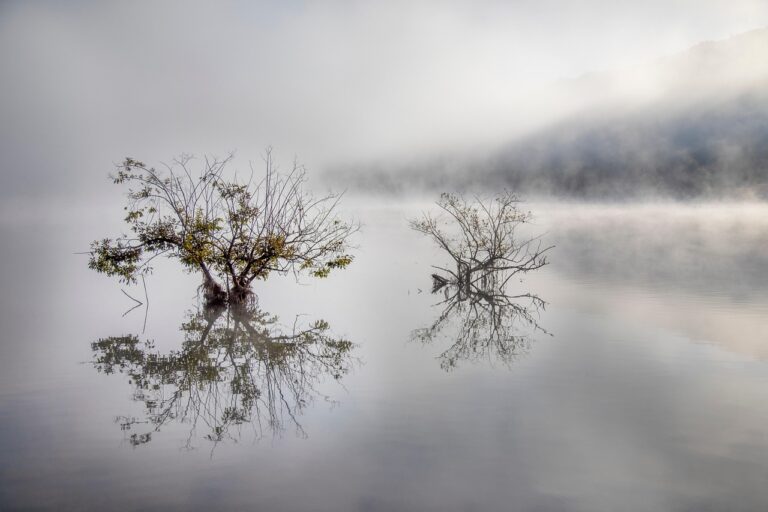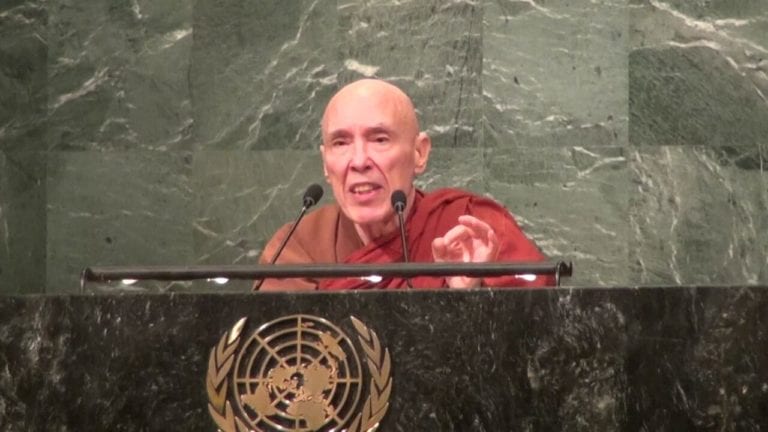Another teaching or dharma principle related to global climate change is interdependence, or, as it is called in the teachings, “dependent co-arising“. I posed the question earlier – how could it be possible to extract something from the level of complex interdependence and call it mine? How could we own this? Another important question for us to ask ourselves is, given such depth and breadth of interdependence, is:
How could it be possible to harm a certain aspect of this world and in turn not harm ourselves?
Of course the answer to that question is, we can’t.
Intellectually it is not much of a stretch to see that we can’t. Yet one of the big reasons that we have gotten ourselves into this mess is that this wisdom, this knowledge that we can’t harm the world without harming ourselves, is not always fully present for us when we are making our decisions about our lives and about the things of the world. This wisdom – this principle of interdependence – is not steering the ship.
The Challenge of Staying Connected
Our dominant cultural narrative (certainly the narrative shared by the US, Canada, Great Britain, and, to some degree, Europe – the cultures that tend to have the largest impact on the resources of the world, and whose social and political impact also ripples out onto the world) – our dominant cultural narrative is that each of us deserves everything we want. Anything that gets in the way of that is wrong. Isn’t this true? Americans believe that we deserve whatever we want and anything that gets in the way of that is just wrong. According to David Korten,
“When the stories a society shares are out of tune with its circumstances they can become self limiting, even a threat to survival. That is our current situation.” Out of tune with its circumstances – not in alignment with the way things are.
It can be difficult, can’t it? To stay connected to the truths of our circumstances. Like the truth that our garbage, our waste, goes somewhere – it doesn’t just disappear! It takes an increasing amount of energy to run our electronics, and it takes energy to make our electronics. They have to be made somewhere. They have to be made in a factory that takes electricity. It takes electricity to charge the battery that runs them. That happens. It doesn’t just happen by magic – it is connected to all sorts of things. It’s hard to remember that right in the moment. It’s hard to remember that every time we get in our car and drive, we are putting carbon dioxide into the air. Every time we get onto a plane we are putting massive amounts of carbon dioxide into the most vulnerable part of the atmosphere. It is hard to remember the strawberry we eat in January probably flew 2-3 thousand miles to get to us. It’s just how we live.
It is difficult, especially given the fast pace of our lives, to keep these truths present within us. It’s also physically invisible. At least in this culture, because we are privileged that it be invisible. In other cultures it is not invisible. But at least here it has been invisible, until now – because we are starting to see and feel the effects of climate change. It’s not just a theory anymore. It is actually happening. It is becoming easier to see.
We’ve Done It Before
I want to point out an example of this wisdom that knows we cannot harm one part of this interconnected web without harming ourselves. There is one way that we have actually acted on that wisdom, and wisely so. And that is, in the arms race – the nuclear arms race – it was known, very clearly, that in an all-out nuclear war no side could win because the radiation that would be released would cause everyone to suffer terribly.
So this is one example of a time when we knew that harming one part of the population, the system, would harm everything. We knew that and when we know that – when that is clear to us – we act on it. There very consciously has not been a nuclear war. It is self protection, but it is still wisdom – it is that clear knowledge that is present as we make our decisions. So we can act appropriately when we have the right information, when it is present for us while we are making our decisions.
Our task as human beings and as dharma practitioners is to reflect on the understanding that we are all connected. Our task is not only to reflect, but to be mindful of things as they actually are when they arise, understand that we are all connected through our own experience, see how conditional things are. I know some of you have seen that and have recorded it – that thought precedes emotion, that things are connected, they are not happening in isolation. To the degree that we begin to tune into this cause and effect it becomes less possible to harm the environment and ourselves in the process. Once again a very natural morality arises from understanding. This is a deep and undeniable truth, this understanding. And it is one of the main truths or insights that we start to open to as we walk this path.
Our task as human beings and as dharma practitioners is to reflect on the understanding that we are all connected. When we begin to tune into this basic wisdom, it becomes less possible to harm the environment and ourselves in the process. Once again, a very natural morality arises from understanding.
So we are back to cause and effect, sometimes called karma. This is like this because that is like that. As that changes it effects this; as this changes it effects that. Cause and effect. When we think and act in accordance with this law of cause and effect, then the outcome is one of harmony and peace. There is harmony and peace because we are congruent with how things are. There is not friction – we are going with the flow. When we think and act in opposition to this law then the outcome is one of disharmony and much suffering.
Another example of how we came into accordance with this law of cause and effect is back in the 60’s when we found out that DDT was extremely harmful to living beings, and that human beings were going to suffer if we kept using it. Once that connection was clearly made, DBT was banned.
Overcoming the Trance

You might be thinking, aren’t we making the connection now? Aren’t we making the connection between cause and effect with CO2 and temperature rise? Aren’t we getting that? And aren’t we even making the connection between temperature increase and human suffering? Isn’t that cause and effect starting to dawn? Well, yes. And no.
Remember that study I mentioned (in part one of this talk), where people didn’t respond to the smoke coming through the vent? There are strong forces at play that are keeping us from making this connection to cause and effect. Some of these forces are outside of us and have to do with the industrial/political complex that runs the show these days. For example, the amount of air time climate change gets on the news, and what is reported, is a very calculated, conscious, controlled thing. Yet there are forces at play inside of us that can keep us from clearly seeing the cause and effect of climate change. I believe it is these internal forces, and how to work with them, that our dharma practice can most effectively address. I’m not saying we shouldn’t address the outer forces. What I am saying is that looking at our own lives, looking inwards at our own hearts, and using our dharma practice to shed light on these inner forces is a good place to start.
This transcription has been edited for readability as a Dharma article. Stay tuned for the final of four posts transcribing Chas’s talk. If you prefer, listen to the full talk here from Dharma Seed: The Dharma Of Global Climate Change







